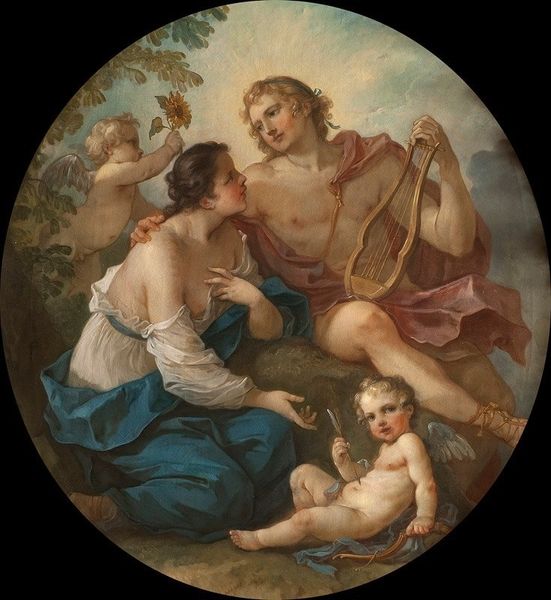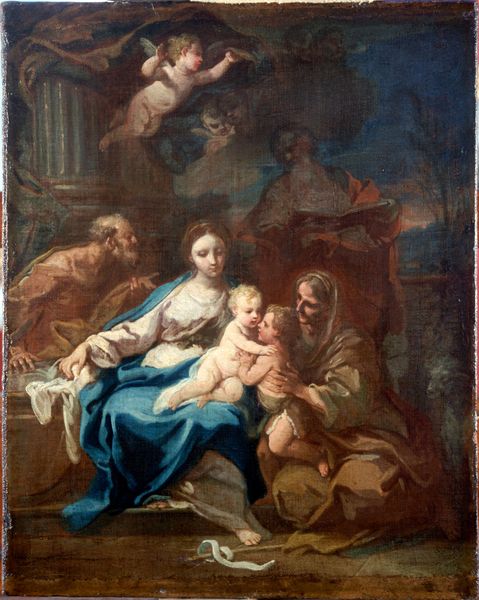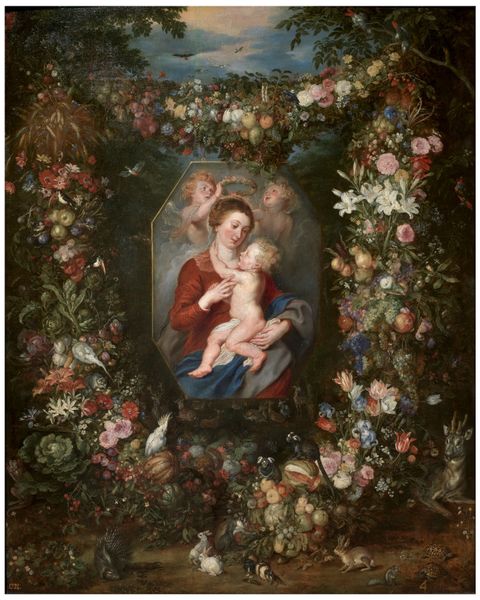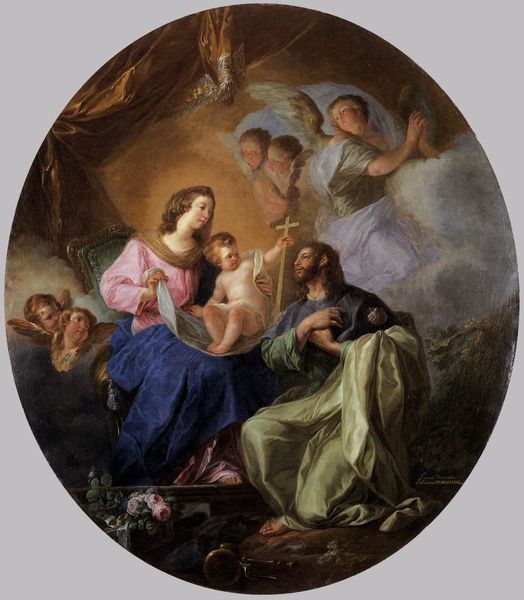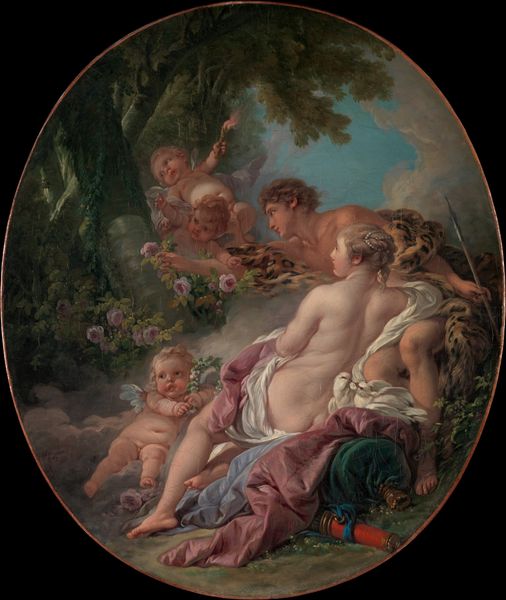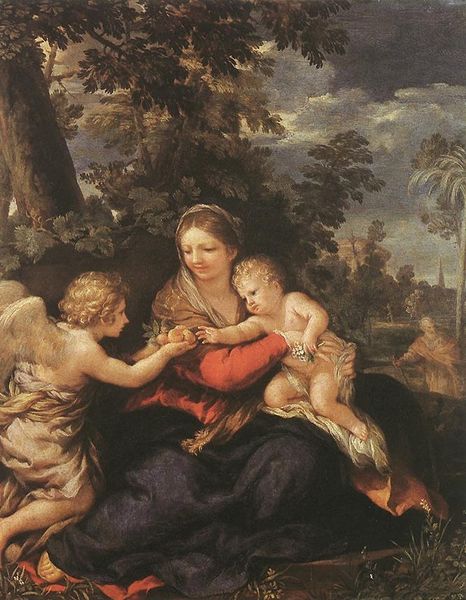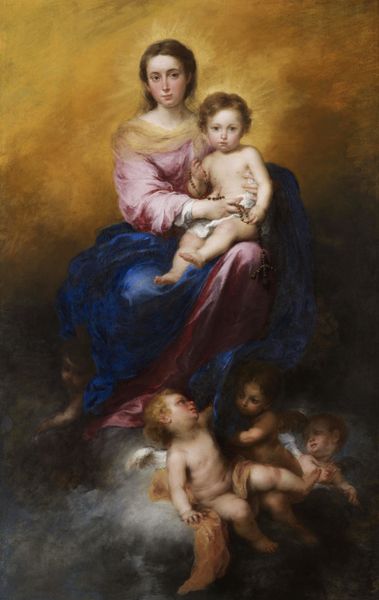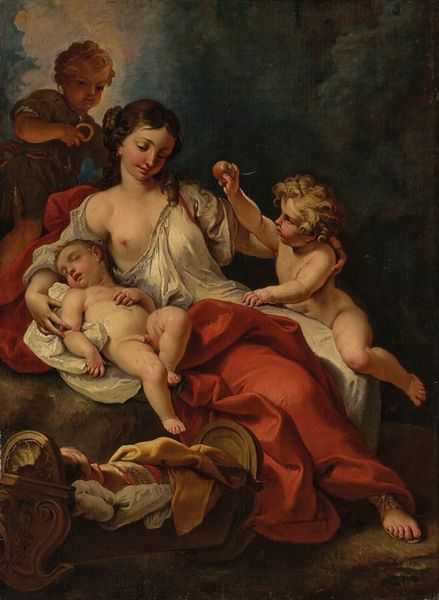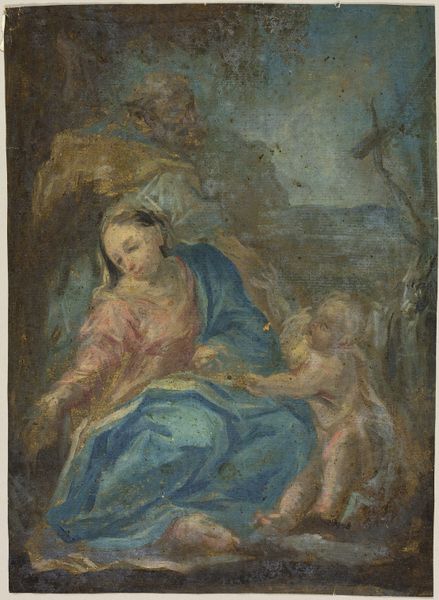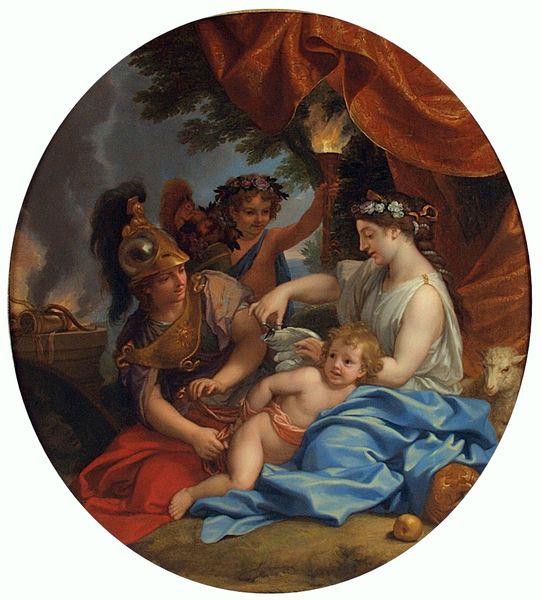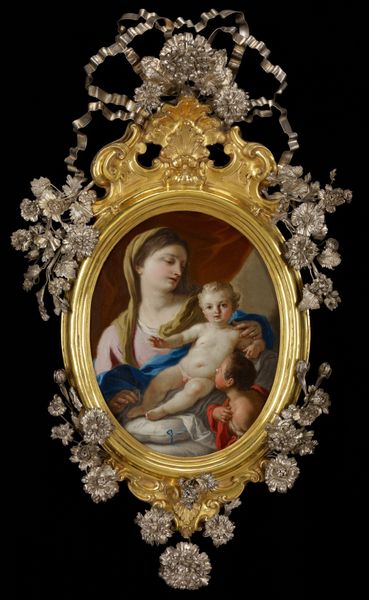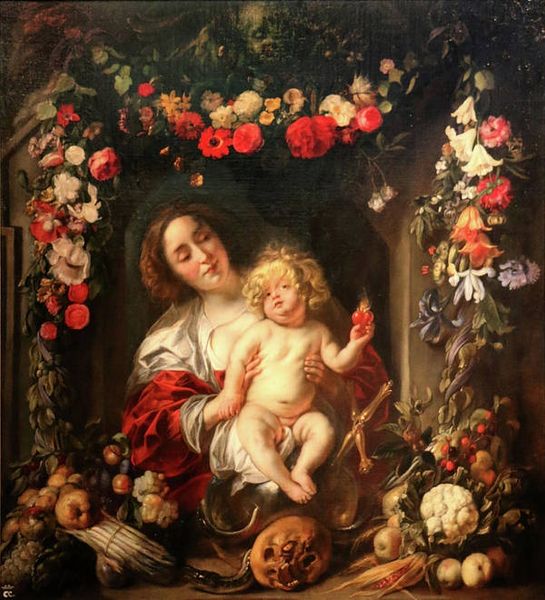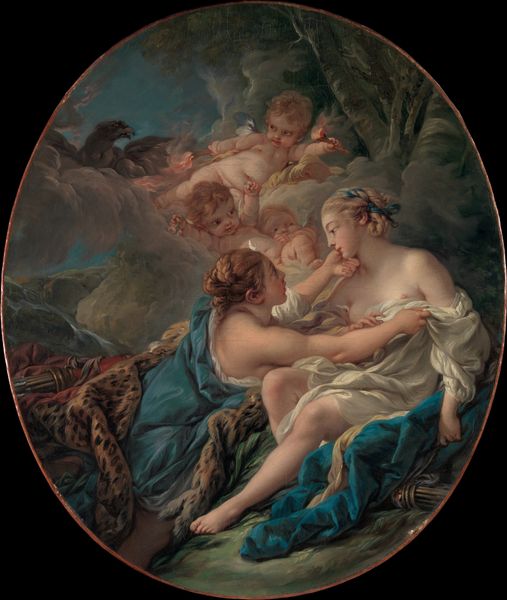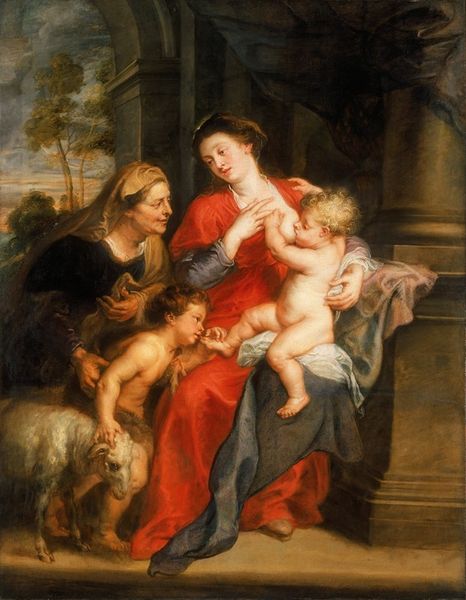
Virgin and Child with the Young Saint John the Baptist and Angels 1765
0:00
0:00
painting, oil-paint
#
portrait
#
fairy-painting
#
allegory
#
painting
#
oil-paint
#
oil painting
#
child
#
rococo
#
angel
Dimensions: Oval, 16 1/8 x 13 5/8 in. (41 x 34.6 cm)
Copyright: Public Domain
Curator: What a vision! The ethereal lightness almost makes it seem like a dream. The colours are pastel, but there's something a bit melancholic lurking beneath the sweetness. Editor: Indeed. What you're seeing is "Virgin and Child with the Young Saint John the Baptist and Angels" created in 1765 by François Boucher, rendered in oil on canvas. It's a fascinating work currently housed here at the Metropolitan Museum of Art. Curator: The clouds cradle these cherubic forms... it’s an obvious nod to idealized motherhood, but Boucher is adding layers. What do you make of the figures huddled above? Is that the Trinity in a fluffy Rococo disguise? Editor: More likely, they represent heavenly adoration of the Virgin and Child, a common trope. The soft treatment certainly pushes into the allegorical, softening any strict theological dogma. Consider that Boucher, in the context of the French court, painted for elite consumption, reflecting a culture grappling with its own spiritual identity. Curator: The almost unsettling realism of John the Baptist is what stands out most to me. He is holding what seems like wool; does that symbolize anything significant? Editor: Saint John, of course, is often depicted with animal skins, recalling his time in the wilderness, and the animal skin relates to sacrifice and repentance, echoing John's prophetic role. But notice the Virgin. Boucher uses the iconic color scheme for the Virgin's garments - a deep blue cloak that evokes truth, faith, and eternity. Blue represents divine protection and steadfastness. It suggests she will shield them from what she foresees as future suffering, in alignment with God's design. Curator: It's fascinating how these images navigate cultural memory, repackaging theological narratives in appealing ways for the prevailing elite sensibility of that time. The very purpose of paintings such as this one became to inspire private contemplation as a sign of wealth and cultural capital. Editor: Exactly. These artworks helped to craft perceptions, negotiate power dynamics, and cement cultural values – and they continue to spark debates about the enduring significance of religious art today. Curator: Indeed. Boucher’s rococo revisioning certainly gives us much to unpack still. Editor: Indeed, the layers and layers invite further consideration.
Comments
No comments
Be the first to comment and join the conversation on the ultimate creative platform.
